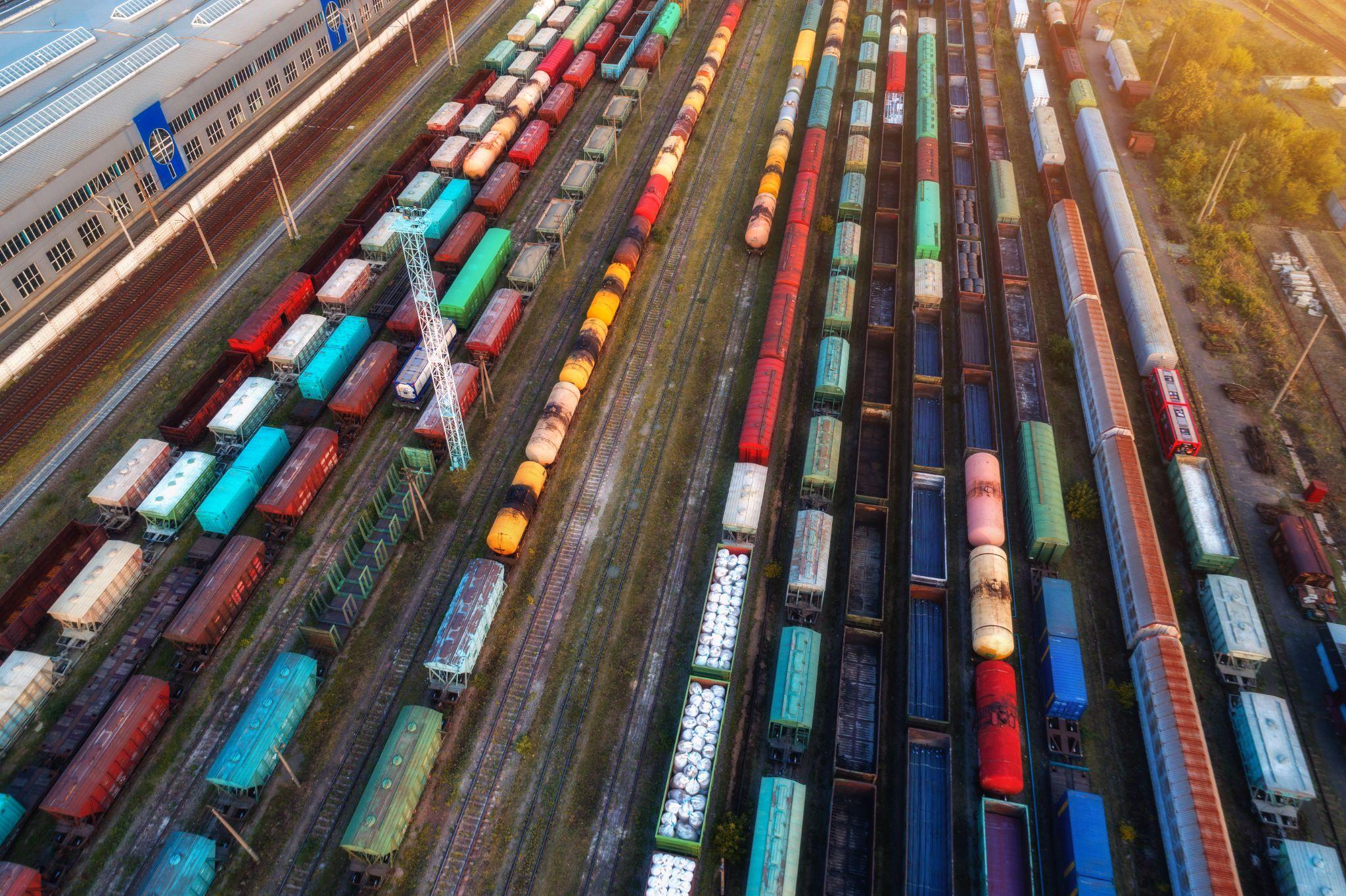
It’s no secret that the pandemic and its lasting ripple effects have placed tremendous strain upon existing supply chain dynamics. Rising shipping demand coupled with worker shortages and extensive health protocol has pushed suppliers to their limit, forcing stakeholders in the intermodal freight sector to find new ways to rise to the challenge.
To that end, panelists at the Intermodal Association of North America’s (IANA) Intermodal Expo convened to discuss infrastructure investment and possible ways to build resiliency into their system. One problem the intermodal freight industry faces is the lack of chassis availability for trucks to move containers — an issue that left the panelists divided.
While some believe that the chassis shortage has led to increased lag time and reduced efficiency, other members felt that adding chassis alone would not be enough to lighten the load, so to speak. Still, others encouraged a broader view and expressed the need for the entire supply chain to be restructured.
We’ll take a look at each view, and then share our own thoughts on whether chassis availability is enough to solve the problem — and how Tideworks can help terminals working through the crisis.
Panel Concerns
The problem with existing supply chain conditions has multiple components, and the panelists’ disagreements show just how many approaches can be taken to help solve the problem. Here are the primary concerns.
Chassis Shortage and Location
The trucking industry’s difficulty with absorbing the increase in intermodal freight comes from many factors, but president of C&K Trucking Mike Burton cited compatible chassis availability as one of its greatest challenges. The difficulty of locating and obtaining an unoccupied chassis can waste valuable time and money, resulting in multiple inefficiencies — especially given that all chassis must be compatible with the containers they haul. Burton explains, “Having to chase all over the city to find a chassis kills our productivity and causes a number of delays.”
Turnover Time
Manufacturing more chassis isn’t the only way to resolve the shortage. Duke Acors, director of strategic operations at the Georgia Port Authority, said “I am not positive that if you threw another 5,000 chassis into the pool it would make a difference…the entire supply chain needs to be evaluated.” Acors pointed out that prolonged turnover time occupies chassis with the containers they carry for longer than necessary, which results in a lack of availability.
Resiliency
One point of agreement amongst all the panelists was that while existing resiliency is adequate for the kinds of shocks caused by short-term disruptions — like employee shortages or weather delays — extreme, long-term strains like those posed by the pandemic have been too great to endure. This has caused some to question if added built-in inventory is needed to meet rising demands.
The average disruption lasts up to 30–60 days, the roughly year-and-a-half pandemic and the increased freight demand that goes with it has produced customer dissatisfaction across the board. Director of international sales at CSX Transportation Jay Strongosky expressed this concern, saying “we are now going out a year, 14 months or so, so we have struggled. Every stakeholder is struggling, and no one is happy with their service.”
All parties agreed that even their most extreme scaling efforts to meet demand have fallen short. Strongosky cited that his company has hired 300 conductors and is still understaffed, while Acors pointed out that the usual capacity limit of 20% above projected demand was still exceeded by the amount of freight coming into his ports. As a possible solution, Burton suggested the adoption of UPS’ strategy of stockpiling well before the holidays to meet shipping demands but was concerned that this could result in excess inventory costs and inefficiencies — and that it still might not solve the problem.
Tideworks’ Take
The diversity of the panelists’ concerns show just how multi-faceted the supply chain crisis is. Chassis availability is part of easing supply chain strains, but is it enough to make a sizable dent in the problem? Our answer is no.
It’s true that the addition of more existing chassis can cut down on delays, but these inefficiencies can be relieved through other, more cost-effective means. Excess turnover time also weighs down intermodal freight delivery, but the problem is deeper than that. Intermodal freight transport and storage is a symphony of carefully-planned logistics, where a single process error can result in a chain reaction of delays. That means automation is critical in helping intermodal freight be stored, located, and moved efficiently — something that only software can provide.
Here’s how Tideworks terminal operating system (TOS) can help support the industry deal with the recent demand crunch and solve chassis availability issues.
Flexibility to Increase Terminal Capacity
Flexibility is essential to the operations of any terminal yard. With so many haulers moving in and out of the terminal every day, containers must continually be stacked and redistributed to accommodate pickups and new deliveries — and all must be properly identified. Terminal yards may vary from 8,000–12,000 units of capacity per day or more, forcing operators to regularly reconfigure their inventory from grounded to stacked arrangements. And since it’s the job of every terminal to track accurate inventory, every container must be accounted for and must be ready for the chassis to haul it away without disruption.
By equipping terminals with the tools they need to plan for incoming and outgoing chassis, Tideworks solutions’ helps terminal operators arrange their containers for the fastest pickup possible, and optimize their capacity along the way. This gives them the flexibility to manage their inventory and helps them adapt to disruptions faster.
End-to-End Accuracy
As those in the industry know, intermodal terminal yards are massive and take significant time to navigate — which is why precision is so important.
Rather than being told to drive to station X for pickup, truckers can save time and effort if their container’s exact position is known. By attaching a stationary GPS unit to each container and a mobile unit to each crane, the position of every container can be identified within a margin of only 6 inches, letting carriers know exactly what their position should be. Tideworks delivers exact accuracy from start to finish.
Work-Order Based System
All terminal yards must be able to adapt, but the more planning that goes into each container move, the more efficient the process will be. Tideworks employs a work-order-based system, scheduling every container move and removing the need for radio communication. Whether it’s a gate, yard, inbound rail, or outbound rail move, the Tideworks TOS focuses all yard equipment on the most urgent tasks at hand, triaging every need for total fleet optimization.
Faster Gate Flips
The process of dropping off a container and picking up a new one on the same chassis before leaving the yard, gate flips help drivers and terminals alike. Some drivers may not want to spend the time it takes to transfer over to a new chassis — or just feel more comfortable with their existing one — and would prefer to save time by loading a new container onto their current bed. Terminals also benefit by opening up some extra space increasing efficiency in the process. Tideworks’ solutions enable terminals to have faster gate flips and free up yard space — further boosting their productivity.

Easily Manage Chassis Pool and Agreements
As Burton aptly noted in the panelists’ discussion, obtaining a suitable chassis costs valuable time. Part of the reason for this is the fact some chassis can only be used on the containers that correspond with the shipping line. The chassis pool agreements that require this compatibility must be enforced at terminals, and if a mismatched chassis-container assembly is found at the terminal, the container must be reconfigured to a proper bed.
Mismatched assemblies result in multiple lifts and mounts, which slows terminals down. The Tideworks’ TOS alerts terminal operators of chassis requirements, preventing mismatches, and ensuring compliance.
Clearer Visibility
Each container is allowed to stay at a terminal for a given duration before fees are incurred, so extended shipping delays can result in costly storage fees called demurrage. Tideworks’ solutions give clearer information on last free day (LFD) and other container properties, preventing demurrage expenses.
Live Lift
Live Lift, a feature in Tideworks TOS solutions, is used in conjunction with criteria-based Live Lift Allocations, allowing (matching) equipment (being in-gated) to be planned directly to rail and send the driver to a proximity-based transfer location close to the railcar planned position. Live Lift Allocations can be quickly enabled/disabled by the planner, so once the configuration is set they can be toggled on and off as needed. Live Lift Allocations are always checked prior to Yard Allocations for in-gating equipment.
Customers experience reduced equipment moves by terminal operators and quicker time to rail load.
READ ON: Top 10 Features and Benefits of Tideworks’ Intermodal Solutions
Tideworks: Leading the Way in Terminal Optimization
The global supply chain crisis brought on by the pandemic certainly requires all stakeholders to rethink their approach. While every solution is valuable and chassis availability contributes to the problem, it will take more to find a complete solution. Intermodal rail terminals must be equipped with solutions to optimize their every action and run more smoothly if shipping delays are to be avoided. Tideworks provides terminal operating system solutions to help terminals run smarter and more efficiently than ever before, so they can keep up with the increased demand. Contact us today, and see how we can help.


